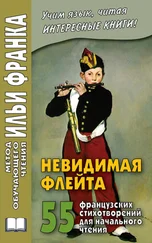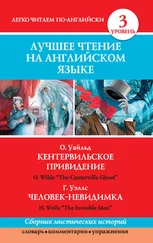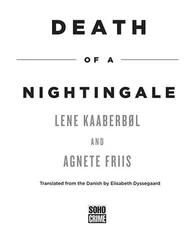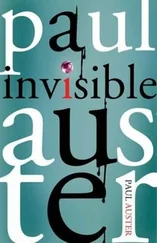Lene Kaaberbol - Invisible Murder
Здесь есть возможность читать онлайн «Lene Kaaberbol - Invisible Murder» весь текст электронной книги совершенно бесплатно (целиком полную версию без сокращений). В некоторых случаях можно слушать аудио, скачать через торрент в формате fb2 и присутствует краткое содержание. Год выпуска: 2012, ISBN: 2012, Издательство: Soho Crime, Жанр: Старинная литература, на английском языке. Описание произведения, (предисловие) а так же отзывы посетителей доступны на портале библиотеки ЛибКат.
- Название:Invisible Murder
- Автор:
- Издательство:Soho Crime
- Жанр:
- Год:2012
- ISBN:9781616951719
- Рейтинг книги:5 / 5. Голосов: 1
-
Избранное:Добавить в избранное
- Отзывы:
-
Ваша оценка:
- 100
- 1
- 2
- 3
- 4
- 5
Invisible Murder: краткое содержание, описание и аннотация
Предлагаем к чтению аннотацию, описание, краткое содержание или предисловие (зависит от того, что написал сам автор книги «Invisible Murder»). Если вы не нашли необходимую информацию о книге — напишите в комментариях, мы постараемся отыскать её.
Invisible Murder — читать онлайн бесплатно полную книгу (весь текст) целиком
Ниже представлен текст книги, разбитый по страницам. Система сохранения места последней прочитанной страницы, позволяет с удобством читать онлайн бесплатно книгу «Invisible Murder», без необходимости каждый раз заново искать на чём Вы остановились. Поставьте закладку, и сможете в любой момент перейти на страницу, на которой закончили чтение.
Интервал:
Закладка:
He surveyed the meeting room grimly. In addition to the people from his own group, there were now four extra investigators who had been assigned to the case first thing that morning, plus an analyst sent by Torben “to fill everyone in on the bigger picture.”
“Go ahead, Gert,” Søren said. “Let’s hear it.”
Gert Sørensen was a mild-mannered man in his early forties, with curly, flame-red hair that somehow seemed misplaced given his natural reserve and discreet tweed-gray appearance. He hadn’t gone to the police academy but had a degree in political science, and he managed the more academically gifted members of the PET’s ranks, the Terror Analysis Department. He stepped over to the projector and pulled up the first PowerPoint slide on his computer.
“November, 1995. Chechen separatists bury a cesium-137 source in a park in Moscow. The cesium source was equipped with a detonator, but it was never triggered. There were no injuries in connection with this event.”
Click.
“December, 1998. The Chechen Security Service finds a container filled with a mixture of radioactive materials. An explosive mine was attached to the canister, which was placed in Argun, a suburb of Grozny. No injuries.”
New click.
“June, 2003. Thai police arrest several men in possession of a large amount of cesium-137 intended, as far as could be ascertained, for the manufacture of a dirty bomb.”
Gert turned off the projector so as not to have to talk over the fan noise. Søren switched on a couple of the overhead lights.
“We also know that al-Qaeda tried to make a bomb with the substance in the United States at least once. Dirty bombs are obviously a part of the contemporary terrorist’s arsenal that we’re going to need to deal with. The world has been spared a full-on attack of this type so far, but in a case like ours, where we have positive affirmation that a radioactive source has been and probably still is active right here in Copenhagen, we have every possible reason to take this seriously. The National Institute for Radiation Hygiene says they found traces of cesium chloride, and that cesium is currently one of the most easily accessible radioactive materials, especially in the former Soviet bloc. Based on the traces, it is not immediately possible to determine how much radioactive material was at the address in Valby, since the extent of the contamination largely depends on how well the source was shielded.”
“And what exactly can a dirty bomb do that other bombs can’t?”
Gitte Nymand’s dark eyes gleamed with something that looked like equal parts professional curiosity and concern.
“Aside from the fact that they explode, which can obviously inflict serious injuries and damage depending on the force of the explosion, the goal is to spread radioactive material throughout the area,” the red-headed analyst said. “Which doesn’t necessarily have a significant impact on the fatality rate. It’s more the nature of the fatalities that causes the concern, and the long-term effects. And especially the psychological effect it can have on the civilian population.”
Søren was on his feet now.
“I don’t need to give you my whole terrorism lecture again, do I?” he asked, and an only partially stifled groan spread through the room. “Terrorism is called terrorism because …?”
“Because the goal is fear,” a couple of them said almost in unison.
“Yes. And that’s exactly what makes a dirty bomb an effective weapon of terror. It’s exceptionally well suited to spreading fear.”
“Decapitated heads,” Mikael said suddenly. “At Antioch the crusaders chopped off enemy heads and lobbed them into the city with the trebuchets. It’s nothing new.”
Sometimes that man knew the strangest things, Søren thought. Mikael had had the dubious honor of escorting the corpse from the gas tank to the medical examiner’s and observing the autopsy, which might explain why his thoughts were a little gorier than usual.
“Let’s just get it over with, Mikael,” Søren said. “The autopsy report?”
Mikael stood up. He looked tired, but then he had been on his feet since 4 A.M. like the rest of the team.
“According to the preliminary report, the guy died of radiation sickness, presumably Thursday or early Friday.”
“Not later than that? Maybe Saturday night or Sunday?” Søren asked.
“No.” Mikael cleared his throat and reached for a water glass. Jytte from the cafeteria had also stocked the meeting table with a plate of open-face sandwiches, but apparently Mikael had lost his appetite. “The pathologists and the staff at the National Institute for Radiation Hygiene pretty much agree that he was exposed to very powerful radiation two to three weeks ago. From accidents elsewhere in the world, we know that the illness typically begins with nausea and vomiting, fever, and in serious cases diarrhea. After that people often improve, but if the exposure was significant, for example four to six grays, the immune system is so compromised that, after a few days, the patient starts to develop infections, another fever, hemorrhages, sores.…” Mikael caught Søren’s eye. “Well, you saw him yourself. When they opened his mouth, his gums were almost gone. God-awful sight.”
Mikael’s last statement hung in the air for an uncomfortably long time, and again Søren had to wave the disturbing images from Valby out of his mind.
“Can they say anything about how he was exposed?”
“Yes. He presumably took in the brunt of the radiation through his hands. The pathologists found wounds there that were reminiscent of burns. There were also a number of other signs that suggested he might have handled the radioactive source.”
“What about identification?”
“Wasn’t there something about a passport? Sándor Horváth, right? Isn’t that why they woke you up in the middle of the night?” Gitte asked.
“I don’t think it’s him,” Søren said. “The nurse recognized the passport photo. The man in the photo was still alive Saturday night when the nurse treated him for a minor eye injury. Alive, and in Denmark. Besides, Sándor Horváth is in his early twenties, and I think our corpse is younger than that. An overgrown boy, no more.”
“Our John Doe was missing a canine in his upper jaw,” Mikael said. “The pathologist thinks he had probably never seen a dentist, unfortunately. At any rate he had no fillings. That’s typical for some of the poorest of the Eastern European Roma.”
“So there won’t be any dental records,” Søren said. “But there must be a link between him and Sándor Horváth. If we haven’t done it already, send a picture of the body to the NBH.”
“It’s been done,” Gitte said. “They were actually very helpful. A man’s on his way up here to assist us in our search for Sándor Horváth, and they also assigned a couple of people to dig up a little more on his family and friends in Budapest. They’re going to keep us up to date.”
“And how’s it going with our friend Khalid?”
“Not so well.”
That response came from Bjørn Steffensen, a generally unshaven and insolent aging homeboy from the rough part of Amager. He normally worked with the Organized Crime Center. He was one of the team members Torben had managed to borrow, and he didn’t look too happy that his first job here was to be the bearer of bad news.
“This whole line of enquiry is a ticket to Shitville” he said, having apparently decided that offense was the best defense. “The technicians have been working on the kid’s computer since 5 A.M., and we have fuck-all on the guy. To begin with, it wasn’t even his computer that was used to contact Sándor Horváth. Or at least not the one we confiscated. I suppose he could have another one stashed somewhere.”
Читать дальшеИнтервал:
Закладка:
Похожие книги на «Invisible Murder»
Представляем Вашему вниманию похожие книги на «Invisible Murder» списком для выбора. Мы отобрали схожую по названию и смыслу литературу в надежде предоставить читателям больше вариантов отыскать новые, интересные, ещё непрочитанные произведения.
Обсуждение, отзывы о книге «Invisible Murder» и просто собственные мнения читателей. Оставьте ваши комментарии, напишите, что Вы думаете о произведении, его смысле или главных героях. Укажите что конкретно понравилось, а что нет, и почему Вы так считаете.












